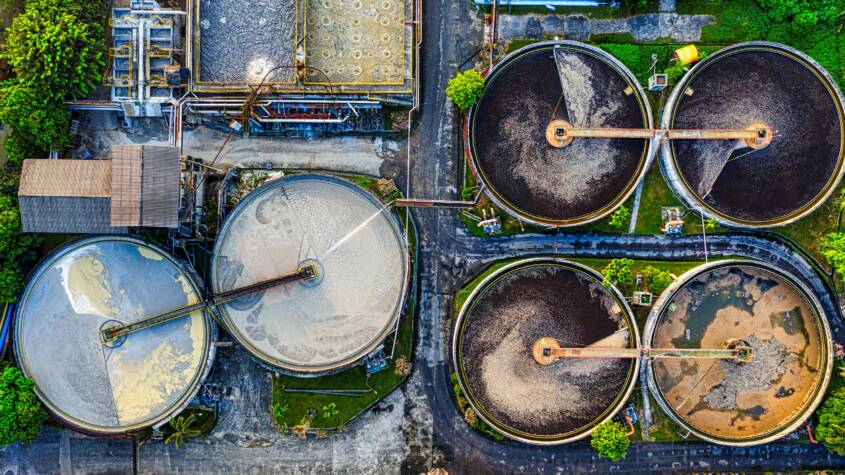
Cooling towers play a crucial role in various industrial processes, serving as a heat rejection system that enhances energy efficiency. Effective water treatment is essential for maintaining cooling tower performance, preventing scale, corrosion, and biological growth. Without proper treatment, these issues can lead to costly downtime and increased operational expenses.
Understanding the components of cooling tower water treatment can empower facility managers to make informed decisions. Key aspects include chemical treatments, routine monitoring, and effective maintenance practices. By addressing these areas, operations can enhance system longevity and improve cost efficiency.
Awareness of the importance of cooling tower water treatment is vital in today’s industrial landscape. The right strategies not only ensure smooth operation but also promote sustainability by reducing water and energy consumption. Adopting a proactive approach is essential for maximizing both performance and financial returns.
Fundamentals of Cooling Tower Water Treatment
Cooling tower water treatment is essential for maintaining efficient cooling operations. It ensures water quality, prevents corrosion, and extends the lifespan of equipment. This section explores the purpose, principles, and types of cooling towers, highlighting their significance in various applications.
Purpose and Importance
The primary purpose of cooling tower water treatment is to maintain water quality that supports optimal heat exchange. It prevents issues such as scaling, corrosion, and biological growth, all of which can lead to equipment damage and operational inefficiencies.
Effective treatment also minimizes environmental impact by reducing water usage and waste. By controlling parameters like pH, conductivity, and microbial levels, operators can maximize system performance and energy efficiency. Regular maintenance and monitoring are crucial to achieving these goals, ensuring systems run smoothly over time.
Basic Principles
Cooling tower water treatment relies on several key principles. Chemical treatment plays a significant role, often involving biocides, corrosion inhibitors, and scale preventatives. These chemicals help manage bacteria, control mineral deposits, and protect metal surfaces from deterioration.
Physical processes are also vital, including filtration and sedimentation. Filtration removes particulate matter, while sedimentation allows solids to settle, enhancing water clarity and quality. Regular monitoring of water chemistry guarantees that treatment processes remain effective, allowing for timely adjustments as needed.
Types of Cooling Towers
There are two primary types of cooling towers: open and closed systems.
- Open cooling towers expose water directly to the atmosphere, allowing for evaporation but increasing the risk of contamination. They are commonly used in industrial applications due to their cost-effectiveness.
- Closed cooling towers feature a closed-loop system where water does not come into direct contact with the air, reducing contamination risks. They are often employed in areas where water quality needs stringent control.
Understanding the differences helps facilities choose the appropriate system and corresponding treatment strategies. Each type requires specific treatment protocols to maintain efficient operation.
Water Treatment Processes and Technologies
Effective water treatment is essential for cooling towers to maintain efficiency and prevent operational issues. Key processes include filtration, disinfection, scaling and corrosion prevention, and blowdown management.
Filtration and Sedimentation
Filtration and sedimentation are vital for removing suspended solids from cooling tower water. Common filtration methods include sand filters, cartridge filters, and multimedia filters. These systems capture particles, debris, and sediment that can lead to fouling.
Sedimentation allows heavier particles to settle at the bottom of a tank. This process enhances water clarity and reduces the load on subsequent filtration steps. Coagulants may be added to facilitate sedimentation by aggregating smaller particles, improving their removal efficiency.
Disinfection Methods
Disinfection is crucial to control microbial growth in cooling towers. Common methods include chlorination, ozonation, and ultraviolet (UV) treatment.
Chlorination is often employed for its effectiveness and low cost. It eliminates bacteria and algae but requires careful management to avoid toxic byproducts.
Ozone is a powerful oxidant that can eliminate pathogens without leaving harmful residues. It requires specialized equipment for generation and application.
UV treatment targets microorganisms directly using specific wavelengths of light. It is effective, chemical-free, and leaves no residual disinfectant in the water.
Scaling and Corrosion Prevention
Scaling and corrosion are significant concerns in cooling towers, leading to reduced heat exchange efficiency. To mitigate scaling, treatment chemicals, such as polymer scale inhibitors, are commonly injected into the system.
Maintaining proper water chemistry is also critical. It includes monitoring pH levels, alkalinity, and hardness. Corrosion inhibitors such as gluteraldehyde or phosphates can be applied to protect metal components from corrosion.
Periodic inspection of the cooling system and monitoring for signs of scale or corrosion can prevent significant damage. Strategies for water treatment must adapt to the specific materials involved in cooling tower construction.
Blowdown Management
Blowdown management involves the controlled removal of a portion of the water to maintain a balanced concentration of dissolved solids in the cooling system. Regular blowdown prevents the buildup of concentrated contaminants and reduces scaling.
The blowdown rate should be optimized based on makeup water quality and operational demands. Automatic blowdown systems can be implemented for better efficiency, reducing manual monitoring.
Proper management not only helps maintain water quality but also enhances the overall efficiency of the cooling tower system. It is crucial to balance blowdown with water conservation practices in facility operations.
Low-Cost SEO Packages: A Comprehensive Guide to Affordable SEO Solutions
In today’s digital age, having a strong online presence is essential for any business, whe…










